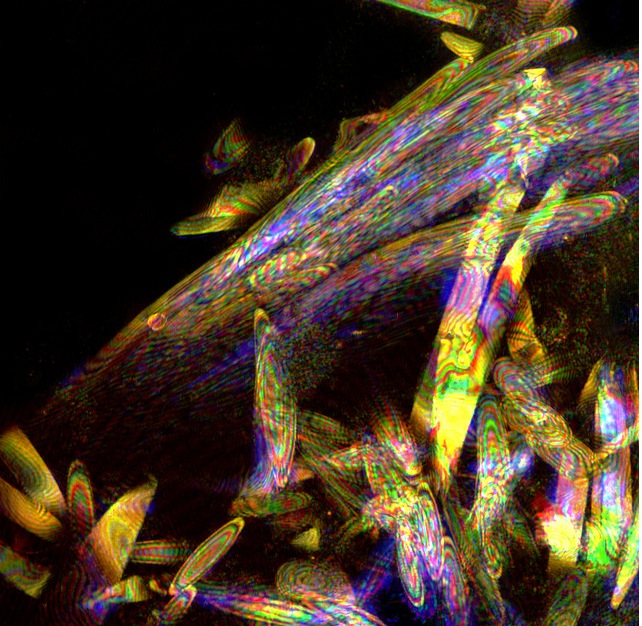Team:Cambridge
From 2011.igem.org
Nature’s colours don’t just come from pigments, but from structure too. We aim to harness the potential of proteins which physically interact with light to create iridescence. As a proof of concept for this new way to dynamically colour our environment, we will engineer living cells to reflect light across the visible spectrum. By creating bacterial machines to produce and purify these proteins, we will explore the potential of this new flexible optical material.
Reflectins are the proteins responsible for giving certain squid species their mind-bending camouflage properties. We have challenged ourselves to artificially express, purify and sculpt these proteins into working optical devices capable of manipulating light. In addition, we will be pushing the boundaries of what is known about this protein in order to test its prospects as the future of devices such as energy-efficient displays, biosensor reporters and tuneable reflectors.
Don't forget to follow us on [http://twitter.com/#!/Cam_iGEM_2011 Twitter], and if you would like to sponsor Team Bactiridescence please take a look at our brochure.
Newsflash: Calling all iGEM alumni! Please spare 5 minutes of your time to Share your iGEM experience!, and help us find out what the long term impact of iGEM is on both its participants and the field of synthetic biology as a whole.
Bactiridescence - An Overview
We have two principle branches to our main project: in vivo studies, in which we will be investigating the properties of reflectin protein in live bacteria, and in vitro studies, in which we will be investigating the properties of reflectin protein that has been extracted from E. coli.
In vivo, we believe that we will be able to engineer the reflectin gene such that it can be expressed in E. coli in a ‘properly folded’ state, something that has never been achieved before. We will then attempt to bind the protein to form an iridescent coating over the surface of the bacteria, creating what we term ‘bactiridescence’. If we could then control the colour changing behaviour of the reflectin, this could be a game-changing step for the future of biosensors.
In vitro, we are confident that we can use the protein to make thin films with interesting optical behaviour (including colour change when someone breathes on it!) as well as diffraction gratings, which are virtually defect-free. There has already been an account of similar experiments in previous research, but we will be looking to extend it substantially. For example, we would like to create multi-layered thin films, which more accurately imitate the ‘natural’ arrangement of reflection in squid tissue, and chemically induce colour changes, in ways that haven’t previously been attempted. These advances are necessary if reflectin is ever to be used in a commercial application.
In addition, we are keen to expand the field of synthetic biology by making improved software tools. Our new open-source web-based software tool, PyGen, will be used for sequence manipulation and display, also integrating related applications already available on the web (including Gibthon, created by Cambridge iGEM 2010). It is specifically designed to improve on areas in which current researchers find fault with current software; we are conducting extensive research among the international iGEM community to ensure that it is consumer oriented. The open-source philosophy is deeply ingrained in the spirit of iGEM as well.
 "
"

